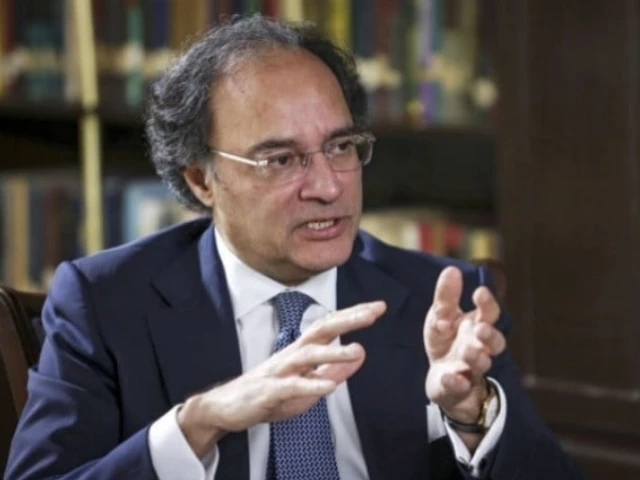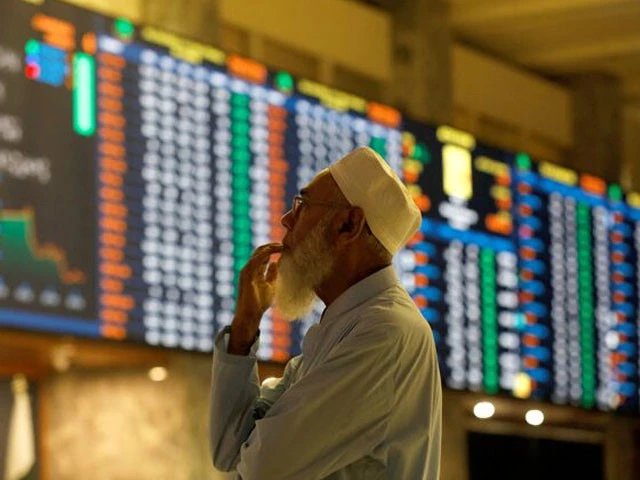Business
Target cuts 1,800 corporate jobs in its first major layoffs in a decade

Target said on Thursday it’s cutting 1,800 corporate jobs as the retailer tries to get back to growth after four years of roughly stagnant sales.
It marks the first major round of layoffs in a decade for the Minneapolis-based retailer. It announced the layoffs in a memo sent by Target’s incoming CEO Michael Fiddelke to employees at its headquarters.
The eliminated roles are a combination of about 1,000 employee layoffs and about 800 positions that will no longer be filled, a company spokesman said. Together, they represent an approximately 8% cut to Target’s corporate workforce, according to the memo. Affected employees will be notified Tuesday.
The retailer announced the cuts as it nears a leadership change.
Target in August named Fiddelke, currently its chief operating officer and formerly chief financial officer, as the successor to longtime leader Brian Cornell. He takes the helm February 1.
Fiddelke has also overseen the Enterprise Acceleration Office, an effort announced in May, which looked for ways to simplify company operations, use technology in new ways and speed up Target’s growth.
Target has been fighting a sales slump, as it tries to rebound from declining store traffic, inventory troubles and customer backlash. The company has said it expects annual sales to decline this year.
Its shares have fallen by 65% since their all-time high in late 2021.
Compared to retail competitors, Target draws less of its overall sales from groceries and other necessities, which can make its business more vulnerable to the ups and downs of the economy and consumer sentiment. About half of Target’s sales come from discretionary items, compared to only 40% at Walmart, according to estimates from GlobalData Retail.
As a result of that and other company-specific challenges, Target’s sales trends and stock performance have diverged sharply from competitors. Shares of Walmart are up about 123% in the past five years, compared to Target’s decline of 41% during the same time period.
In a memo sent Thursday to employees at Target’s headquarters, Fiddelke said the employee cuts will help Target make urgent changes.
“The truth is, the complexity we’ve created over time has been holding us back,” he said in the memo. “Too many layers and overlapping work have slowed decisions, making it harder to bring ideas to life.”
He said the cuts are difficult, but “a necessary step in building the future of Target and enabling the progress and growth we all want to see.”
Target employees affected by the layoffs will receive pay and benefits until January 3, in addition to severance packages, according to a company spokesman. No roles in stores or in Target’s supply chain were impacted by the cuts, the company spokesman said.
Read the full memo from Fiddelke:
Team,
This spring, we launched our enterprise acceleration efforts with a clear ambition: to move faster and simplify how we work to drive Target’s next chapter of growth. The truth is, the complexity we’ve created over time has been holding us back. Too many layers and overlapping work have slowed decisions, making it harder to bring ideas to life.
On Tuesday, we’ll share changes to our headquarters structure as an important step in accelerating how we work. This includes eliminating about 1,800 non-field roles — about 8% of our global HQ team. As we make these changes, I’m asking all U.S. HQ team members to work from home next week. Target in India and our other global teams will follow their in-office routines.
Decisions that affect our team are the most significant ones we make, and we never make them lightly. I know the real impact this has on our team, and it will be difficult. And, it’s a necessary step in building the future of Target and enabling the progress and growth we all want to see.
Adjusting our structure is one part of the work ahead of us. It will also require new behaviors and sharper priorities that strengthen our retail leadership in style and design and enable faster execution so we can:
- Lead with merchandising authority;
- Elevate the guest experience with every interaction; and
- Accelerate technology to enable our team and delight our guests.
Put together, these changes set the course for our company to be stronger, faster and better positioned to serve guests and communities for many years to come.
Michael
Business
CII Lays Out Investment Roadmap For Budget 2026-27

India’s next phase of economic growth will depend on steady and strong investment across public, private, and foreign channels, according to the Confederation of Indian Industry (CII). CII, in a release, laid out a detailed plan for the Union Budget 2026-27, saying that the Budget needs to act as both a stabiliser and a growth driver.
CII Director General Chandrajit Banerjee said the coming Budget must focus on boosting investments to keep India’s growth steady. He explained that public spending has pushed the country’s recovery after the pandemic, and that continued support in this area will help India stay on track as one of the fastest-growing major economies.
CII has suggested raising central capital expenditure by 12 per cent and increasing support to states by 10 per cent in FY27. These funds, it said, should go mainly to areas where spending creates the highest impact, such as transport, energy, logistics, and the green transition. CII also recommended creating a Capital Expenditure Efficiency Framework to help select and track important projects and measure their outcomes more clearly. Along with this, it proposed launching a new Rs 150 lakh crore National Infrastructure Pipeline for 2026-32 to give long-term clarity to investors and states.
The release also noted that India needs a more flexible fiscal policy. CII suggested shifting from strict annual deficit rules to a debt framework that adjusts with economic cycles. This, it said, would help the government respond better during shocks without losing long-term stability.
On private investment, CII highlighted that India now needs strong momentum from businesses to support growth. “The Government of India has provided a big demand push via income tax relief in last year’s Union Budget and recently via GST 2.0. Investments, especially private sector investment, will be the next big driver for economic growth that needs to be focused on in the next fiscal to continue the growth momentum,” Banerjee said.
CII recommended tax credits or easier compliance for companies that increase investments or production, along with returning accelerated depreciation to help firms, especially MSMEs, modernise.
To attract long-term global capital, CII proposed creating an NRI Investment Promotion Fund with partial government holding. This fund would help channel NRI and foreign institutional money into areas like infrastructure and AI. It also suggested strengthening the National Investment and Infrastructure Fund through a new Sovereign Investment Strategy Council to guide investments.
CII further called for simpler external borrowing rules and a single-window system for large foreign investment proposals to reduce delays and increase certainty. It also suggested forming an India Global Economic Forum to allow structured discussions between global investors and government leaders.
“An investment-driven growth strategy, anchored in fiscal credibility and institutional reforms, will define India’s next development phase,” Banerjee said.
Business
Can Indians Switch To A 4-Day Work Week? Here’s What Govt Says

New Delhi: For decades, the five-day work week has been the norm for most Indian employees. However, with rising conversations around work–life balance and productivity, many are now wondering if a four-day work week could become a reality in India. Several countries such as Japan, Germany and Spain have already experimented with shorter work schedules and reported encouraging outcomes. Interestingly, recent changes and discussions around India’s labour laws indicate that a four-day work week may be possible for certain sections of the workforce.
What the Labour Ministry Has Said on 4-Day Work Week
The Ministry of Labour and Employment recently clarified on X (formerly Twitter) that a four-day work week is possible under the new Labour Codes. According to the Ministry, employees can work for 12 hours a day for four days, while the remaining three days will be paid holidays. However, the total weekly working hours will still be capped at 48 hours, and any work beyond 12 hours in a day will have to be paid at double the normal wage rate.
Flexible Work Schedule Allowed Under New Labour Codes
The Labour Ministry has said that the revised Labour Codes allow employees to work 12 hours a day for four days, while the remaining three days can be taken as paid holidays, making a four-day work week possible under the new rules.
Weekly Work Hours Cap Remains Unchanged
The Labour Ministry clarified that the total working hours in a week will still be capped at 48 hours, even under a four-day work schedule. It also noted that the 12-hour workday includes breaks and spread-out time, ensuring employees are not working continuously for the entire duration.
What’s New Under India’s Updated Labour Laws
On November 21, 2025, the government consolidated 29 existing labour laws into four new labour codes—the Code on Wages (2019), Industrial Relations Code (2020), Social Security Code (2020), and the Occupational Safety, Health and Working Conditions Code (2020). The move aims to simplify labour regulations while ensuring timely payment of wages, regulated working hours, better workplace safety and wider access to health and social security benefits.
A major change under the new codes is for fixed-term employees. They are now entitled to the same benefits as permanent workers, including leave, health coverage and social security. Notably, fixed-term workers can claim gratuity after just one year of continuous service, instead of the earlier five-year requirement, and must be paid wages equal to permanent employees doing similar work.
Business
Kanpur–Lucknow Expressway To Revitalise Startup Ecosystem, Forge Vibrant Economic Belt

New Delhi: Lucknow is set to witness a significant boost to its startup ecosystem with the construction of the Kanpur–Lucknow Expressway, a key infrastructure project expected to reshape economic activity across the region, Uttar Pradesh government officials said on Sunday.
The expressway, being developed under the Uttar Pradesh Chief Minister Yogi Adityanath government’s connectivity push, is projected to emerge as a catalyst for innovation, entrepreneurship, and industrial growth. Once operational, the expressway will drastically reduce travel time between Kanpur and Lucknow, cutting the current journey of nearly two hours to a matter of minutes.
The improved connectivity is expected to make business travel more efficient, strengthen supply chains, and enhance logistics movement, making the corridor an attractive destination for startups and investors alike. According to Deepak Maini, Chairman of the Progressive Federation of Trade and Industry (PFTI), Uttar Pradesh’s rapid infrastructure expansion is creating a favourable environment for innovation-driven enterprises.
He said the Kanpur–Lucknow corridor has the potential to evolve into a vibrant economic belt, generating new opportunities in industry, education, and employment.
Industry experts believe the expressway will also encourage closer collaboration between academic institutions. With faster access, partnerships between IIT Kanpur and leading educational and management institutions in Lucknow are expected to intensify, particularly in areas such as deep technology, the Internet of Things, and advanced manufacturing.
Such collaboration could provide startups with easier access to mentorship, research facilities, funding avenues, and skilled talent.
Plans are also being discussed to develop manufacturing and logistics clusters along the expressway route.
In the coming years, the corridor is likely to see the establishment of IT parks, industrial nodes, and special economic zones, offering startups a conducive environment to scale operations. Officials say the expressway aligns with the state’s long-term vision of “Viksit Uttar Pradesh @ 2047”, aimed at accelerating economic growth and job creation.
A strategic roadmap is being prepared to position Lucknow as a major startup hub in North India, with expectations of increased private investment and the generation of a large number of high-paying jobs in the years ahead.
-

 Politics7 days ago
Politics7 days agoThailand launches air strikes against Cambodian military: army
-

 Fashion7 days ago
Fashion7 days agoGermany’s LuxExperience appoints Francis Belin as new CEO of Mytheresa
-

 Politics7 days ago
Politics7 days agoZelenskiy says Ukraine’s peace talks with US constructive but not easy
-

 Politics1 week ago
Politics1 week ago17 found dead in migrant vessel off Crete: coastguard
-

 Tech1 week ago
Tech1 week agoWIRED Roundup: DOGE Isn’t Dead, Facebook Dating Is Real, and Amazon’s AI Ambitions
-

 Business4 days ago
Business4 days agoRivian turns to AI, autonomy to woo investors as EV sales stall
-

 Politics4 days ago
Politics4 days agoTrump launches gold card programme for expedited visas with a $1m price tag
-

 Tech5 days ago
Tech5 days agoJennifer Lewis ScD ’91: “Can we make tissues that are made from you, for you?”












